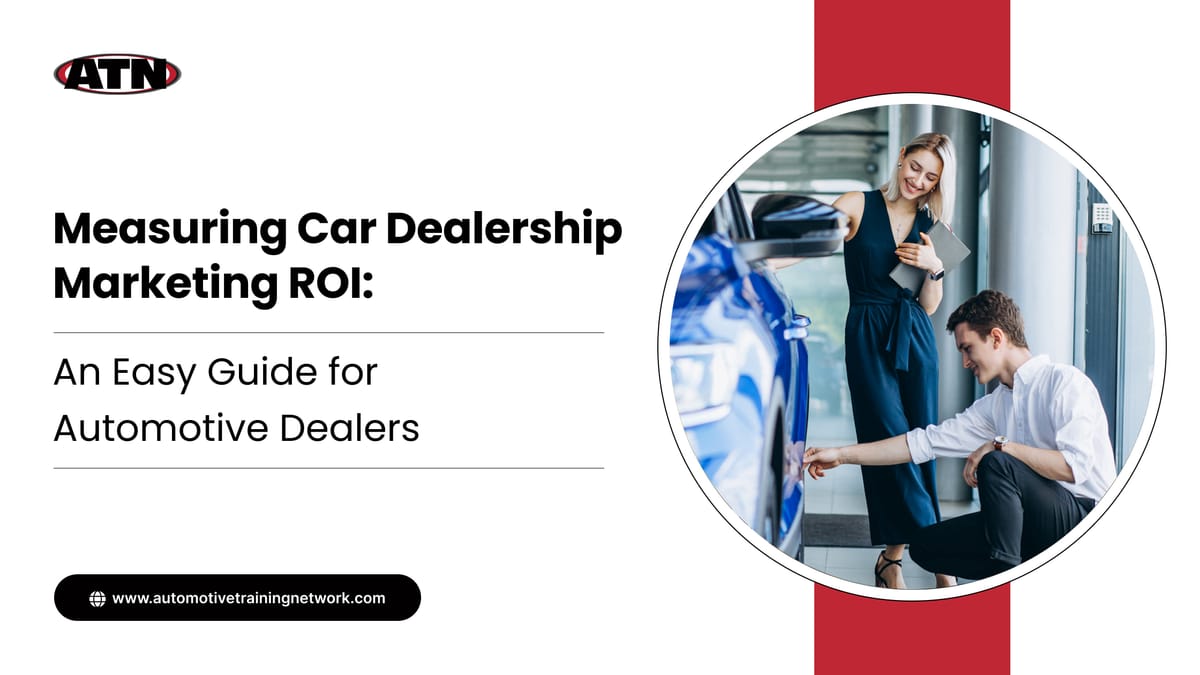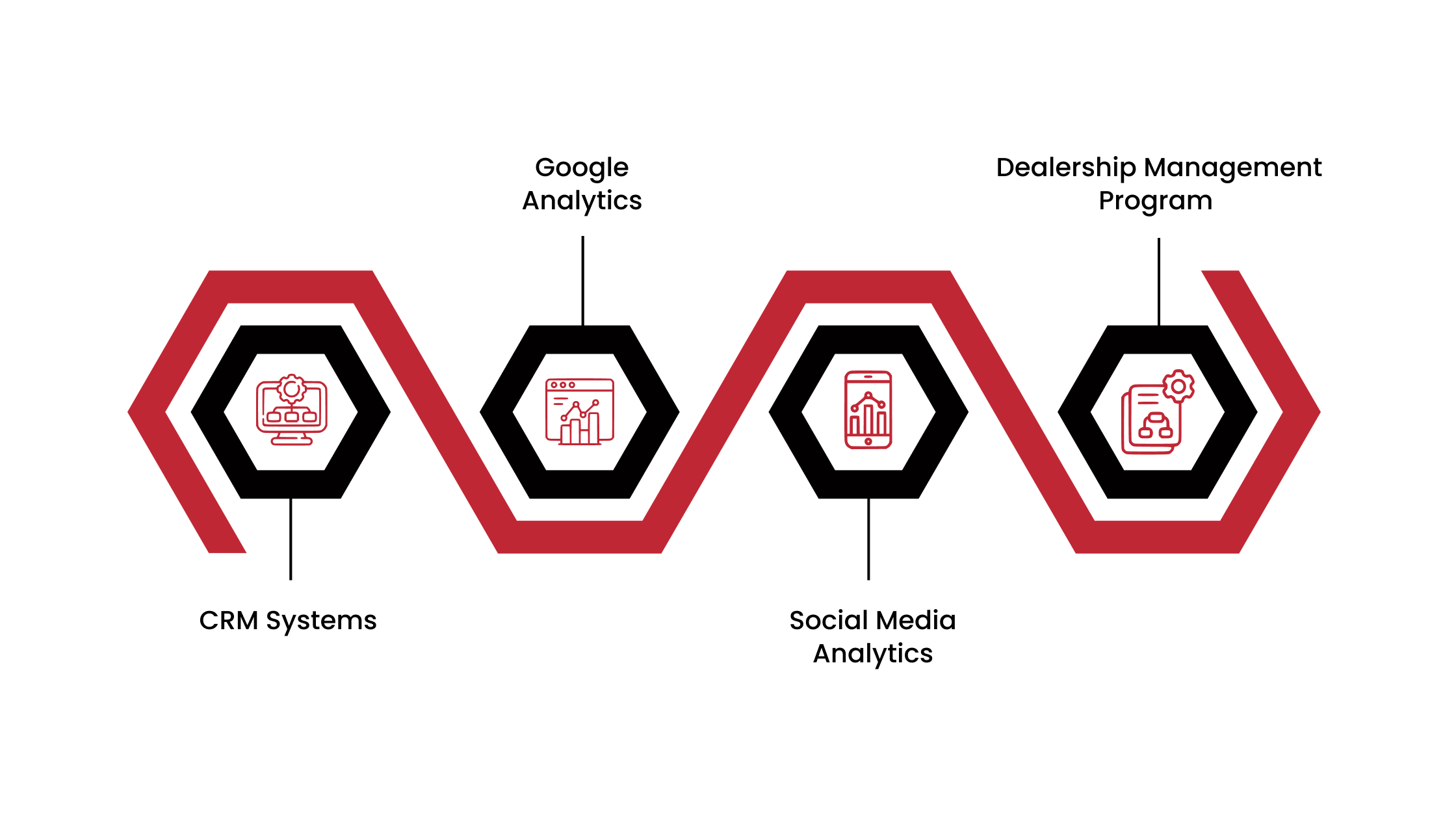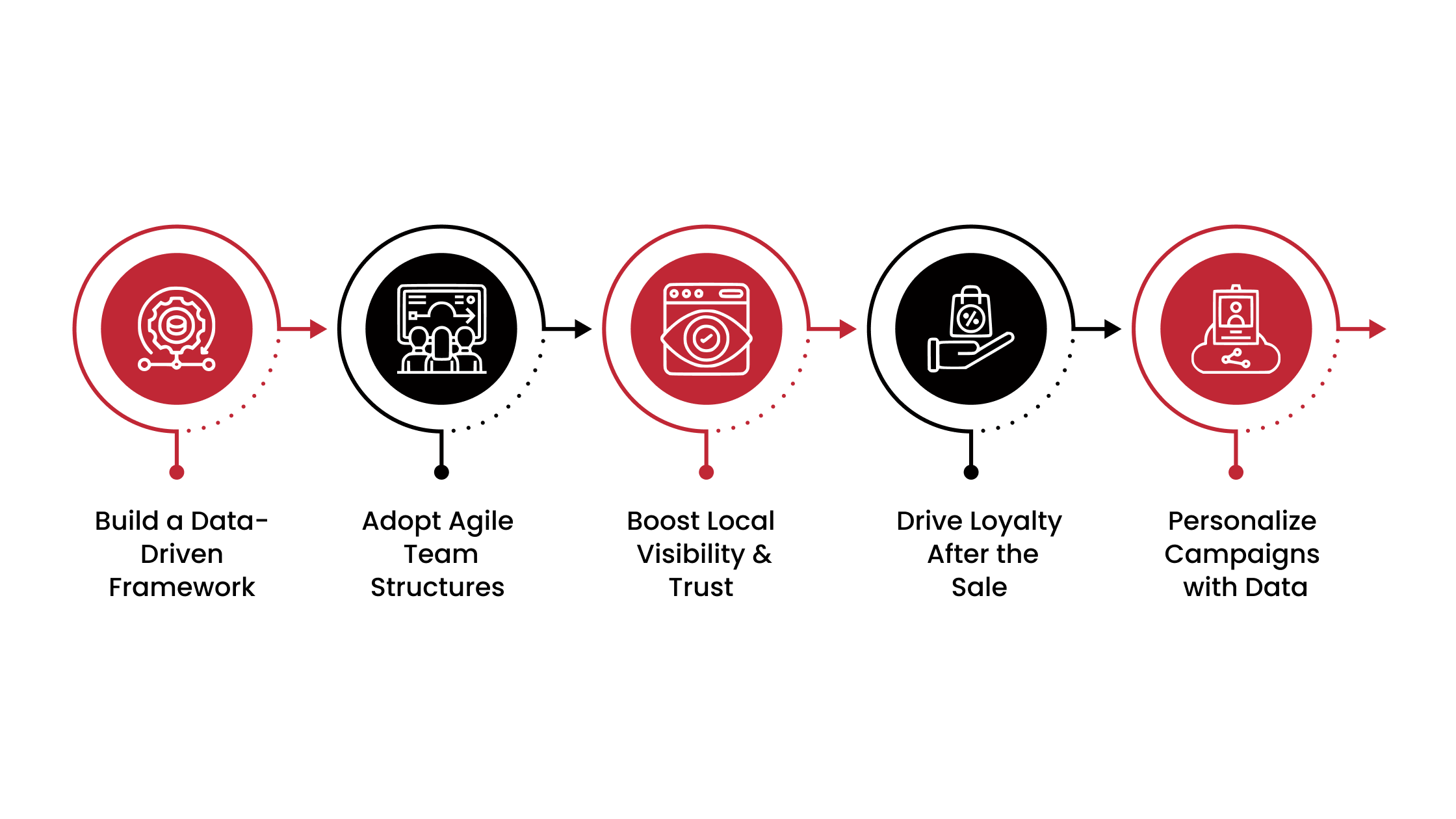Measuring Car Dealership Marketing ROI: An Easy Guide for Automotive Dealers

Automotive dealerships often pour significant resources into digital ads, social media campaigns, and local promotions, yet struggle to determine which initiatives actually drive sales. The challenge typically arises from fragmented tracking methods, unclear attribution, and a lack of unified reporting. Without visibility into what’s working, dealerships risk overspending on campaigns that don’t deliver.
That’s why marketing leaders across industries are prioritizing measurement. Research shows that 83% of marketing leaders now prioritize proving ROI as a means to secure budgets and make more informed decisions. For automotive dealers, adopting that mindset is essential for sustainable growth.
In this blog, we will discuss the steps to measure dealership marketing ROI and use the insights to improve performance.
What is Marketing ROI in the Automotive Industry?
Marketing ROI, or return on investment, measures the effectiveness of your marketing spend in generating revenue. For car dealerships, it goes beyond clicks and impressions. It quantifies the contribution of marketing efforts to actual vehicle sales, service appointments, and long-term customer retention.
Automotive marketing ROI involves tracking both direct and indirect outcomes. Direct ROI captures measurable transactions, such as leads converted into showroom visits or financed vehicle sales. Indirect ROI considers brand awareness, customer engagement, and lifetime value, which may influence future purchases even if they don’t generate immediate revenue.
Calculating ROI in the automotive sector requires aligning marketing metrics with dealership goals. A simple formula often used is:
For example, if a dealership spends $20,000 on digital ads and generates $100,000 in vehicle sales attributed to those campaigns, the marketing ROI would be 400%.
Accurate measurement depends on a unified tracking system that connects lead sources, CRM data, and sales outcomes. Without this integration, dealerships risk misattributing revenue, underestimating campaign performance, or overlooking channels that actually drive results.
Major Metrics to Track for Accurate ROI Measurement
Accurately measuring marketing ROI requires dealerships to track a mix of performance indicators across sales, digital engagement, and operational efficiency. Monitoring the right metrics ensures campaigns are evaluated based on real impact rather than assumptions, helping managers make data-driven decisions that improve revenue and profitability.
- Lead Generation Metrics: Number of leads, lead conversion rates, and source attribution.
- Sales Metrics: Units sold, average gross profit per vehicle, and upsell performance.
- Customer Retention Metrics: Repeat purchase rates, customer lifetime value, and service engagement.
- Digital Engagement Metrics: Website traffic, social media interactions, email open rates, and click-through rates.
- Operational Metrics: Cost per lead, cost per acquisition, and return on ad spend (ROAS).
Tracking these metrics holistically allows dealerships to pinpoint which marketing strategies deliver the highest returns and where adjustments are needed to optimize performance.
Methods and Platforms for Measuring Marketing ROI

Effectively measuring marketing ROI requires the right mix of software to capture and analyze data across all dealership touchpoints. These platforms track performance and help identify opportunities to improve campaigns and maximize profitability.
1. CRM Systems
CRM platforms allow dealerships to capture customer interactions, lead activity, and sales data. By tracking the entire journey from initial contact to closed deal, dealerships can understand which marketing efforts are generating high-quality leads and driving conversions.
2. Google Analytics
Google Analytics provides insights into website traffic, user behavior, and conversion patterns. Dealerships can see which online campaigns, landing pages, and digital channels are most effective at driving engagement and leads, enabling better allocation of marketing resources.
3. Social Media Analytics
Social media analytics help measure engagement, reach, and campaign performance across various platforms, including Facebook, Instagram, and LinkedIn. Understanding audience interaction and content effectiveness enables dealerships to refine their messaging and optimize ROI on advertising expenditures.
4. Dealership Management Program
ATN’s Full Dealership Management Program provides dealerships with comprehensive resources and strategies to boost operations and marketing efficiency. Benefits include:
- Continuous communication with OEMs and management teams
- Expertise in CRM templates, workflows, and daily reporting
- Monthly revenue and advertising reviews to refine marketing spend
- Virtual and in-person coaching to align departmental goals with marketing outcomes
- Advanced inventory and financial analyses to support data-driven decision-making
Utilizing these methods enables dealerships to accurately measure the actual impact of their marketing efforts, optimize campaigns, and make informed decisions that drive both sales and long-term profitability.
Best Practices for Optimizing Marketing ROI

Maximizing marketing ROI has become one of the most challenging tasks for today’s automotive dealerships. Shoppers are spending more time online, comparing options across dozens of touchpoints before ever setting foot in a showroom.
That means every marketing dollar has to work harder, driving visibility, qualified leads, and long-term loyalty. With the right strategies in place, dealerships can track what’s working, cut wasted spending, and invest in campaigns that truly deliver results.
1. Build a Data-Driven Framework
Dealerships can’t optimize what they don’t measure. Too often, marketing performance is judged by vanity metrics, like clicks, impressions, or last-touch conversions, without revealing which channels actually drive profit. A data-driven framework shifts the focus from guesswork to measurable impact.
That starts with multi-touch attribution, which tracks every step of the customer journey, from the first website visit to the final showroom appointment. By assigning value across all interactions, dealerships can see how search ads, social content, email campaigns, and even offline events contribute to a sale.
Pairing this with media mix modeling (MMM) or regression analysis helps identify which channels deliver the most substantial return at scale.
To make it actionable, dealerships should:
- Integrate CRM, DMS, and marketing analytics programs for a unified view of lead sources.
- Use in-market experiments (like A/B testing campaigns or offers) to validate performance.
- Apply ROI modeling to determine which campaigns generate net profit—not just traffic.
The goal is to build a system that shows exactly which marketing dollars are fueling sales and service growth. With clear attribution, you can confidently reallocate budget to the strategies that produce the highest ROI.
2. Adopt Agile Team Structures
Even the best marketing strategy fails if dealership teams operate in silos. Marketing, sales, and service often run on separate priorities, leading to duplicated ad spend, inconsistent messaging, and missed opportunities. Building agile and collaborative operating structures ensures every department pulls in the same direction.
Agile means more adaptive. Dealerships that adopt an agile framework can test campaigns quickly, share results in real time, and make rapid adjustments based on what’s working.
Bringing together cross-functional teams, including marketing, sales, operations, and finance, creates a unified view of performance and aligns budgets with business goals.
Here’s how to put this into practice:
- Form cross-functional pods: Blend marketing, sales, and data teams to design and adjust campaigns together.
- Run shorter planning cycles: Replace rigid quarterly plans with two-week or monthly sprint reviews.
- Align dealer groups and OEM messaging: Ensure local campaigns don’t duplicate or conflict with brand-level advertising.
This operating model creates a culture of speed, accountability, and continuous improvement. Instead of reacting late, dealerships can anticipate shifts in buyer behavior and adjust campaigns before budgets are wasted.
3. Boost Local Visibility & Trust
Car buyers start their journey close to home, and if your dealership doesn’t appear in local searches or community spaces, you risk losing them to competitors. Visibility isn’t just about showing up online but about building trust and creating engagement that carries over into the showroom.
Strong local SEO is the foundation. Optimizing your Google Business Profile, keeping your dealership’s name, address, and phone number consistent across directories, and encouraging fresh reviews all help you rank higher in “near me” searches.
On social media, engagement matters as much as presence. Regular posts, behind-the-scenes videos, polls, and customer shout-outs humanize your dealership and make it part of the local conversation.
To strengthen local presence, focus on:
- Claim and optimize local listings with accurate info, photos, and service details.
- Encourage customer reviews and respond to them quickly to boost credibility.
- Create video content like walkarounds, service tips, or customer stories to increase engagement.
When visibility, engagement, and reputation work together, you’re building trust in the community. That trust pays off in higher foot traffic, stronger referrals, and repeat buyers.
4. Drive Loyalty After the Sale
The sale doesn’t end when the customer drives off the lot. It’s the beginning of a relationship that determines whether they return for service, refer friends, or choose you again for their next vehicle. Dealerships that invest in post-sale engagement consistently see higher lifetime value from each customer.
Effective strategies include personalized email campaigns with service reminders, targeted offers for accessories, and anniversary messages tied to the buyer’s purchase date. Loyalty programs, referral incentives, and community events also keep customers connected and feeling valued long after the initial transaction.
On the service side, timely follow-ups and clear communication about maintenance schedules foster trust while increasing retention in the dealership's most profitable department.
To strengthen loyalty, dealerships can:
- Segment post-sale communication (new buyers, service customers, repeat buyers).
- Use automation methods to deliver timely reminders and offers.
- Host events and workshops to keep customers engaged outside of sales cycles.
Ultimately, long-term success comes from treating every buyer as a relationship, not just a transaction. ATN’s sales training program helps dealership teams master the skills needed for this ongoing engagement, teaching staff how to build trust, nurture relationships, and create experiences that turn one-time buyers into lifelong customers.
5. Personalize Campaigns with Data
Modern car buyers expect experiences tailored to their needs. Generic ads and broad campaigns are no longer effective, especially when inventory levels and buyer preferences vary significantly by market. Personalization ensures your marketing speaks directly to what customers want and aligns with what you have available on the lot.
Data from your CRM, DMS, and online behavior can reveal whether buyers are motivated by price, fuel efficiency, safety features, or EV range. Pairing these insights with real-time inventory data lets dealerships push the right vehicles to the right audiences.
For example, a campaign highlighting certified pre-owned SUVs will resonate more effectively if you have a strong stock in that segment and know that local shoppers are searching for family vehicles.
To put personalization into action, dealerships should:
- Target campaigns by buyer persona (first-time buyers, families, EV shoppers, luxury clients).
- Adjust ad spend dynamically to promote models with higher demand or faster turnover.
- Utilize retargeting to follow up with shoppers who have shown interest in specific vehicles online.
Boost ROI With Training That Actually Works With ATN

Measuring marketing ROI is about building a dealership that knows precisely where to invest, how to adapt, and how to create sustainable growth. When you track the right metrics, align teams, and personalize your outreach, every dollar works harder and delivers more value to your bottom line.
But systems and data only go so far. Your people make the most significant difference. That’s where Automotive Training Network (ATN) comes in. For over 40 years, ATN has been helping dealerships around the world boost performance with automotive training and consulting that doesn’t suck.
Whether you need to sharpen sales fundamentals, master digital lead management, or design a post-sale engagement process that brings customers back, ATN has customizable training for your Sales, BDC, and Internet teams. Choose from:
- Virtual Training – interactive, one-on-one modules with Tom Stuker
- Bootcamps – intensive 4-day sessions to transform sales and BDC performance
- Live In-Dealership Workshops – tailored training to meet your store’s exact challenges
- Consulting & Managed Stores – executive support, profitability reviews, and GM services to guarantee results
Your dealership already has the resources, so it’s time to give your team the skills and structure to make them count.
Ready to maximize your marketing ROI and turn your team into top performers?
